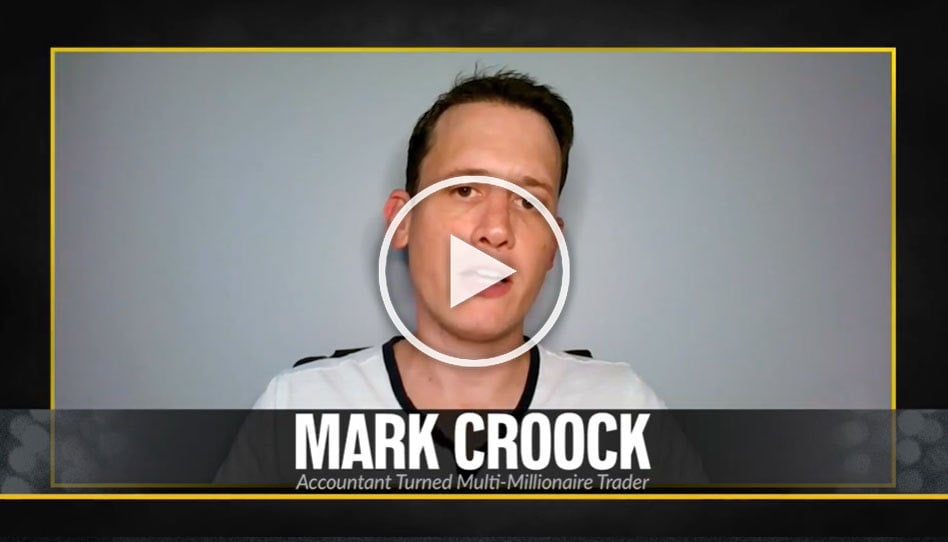Happy Friday, Evolvers!
It’s a BIG day for the market with the much-anticipated release of the September jobs report happening before the open.
Leading into this major catalyst, the market backdrop has been very bearish, with the SPDR S&P 500 ETF Trust (NYSEARCA: SPY) down nearly 6% in three weeks.
If I had to guess, this slide is about the one thing the market hates more than anything — uncertainty.
Traders and institutions are rapidly rebalancing their portfolios, expecting the worst.
This is setting up for a fascinating day of trading today. I won’t make moves unless I see an ideal setup for my strategy, but I’ll definitely be watching my charts closely.
But enough small talk. It’s time for our Friday Q&A!
Keep reading to see my answers to your questions…
“I tend to sell my positions before the top. How do you determine when an options play is nearing its peak?”
Did you make money on the trades? If the answer is yes, I wouldn’t be fretting over a couple of missed %.
After all, the worst mistake is holding too long and allowing your unrealized gains to evaporate.
By selling too early and (hopefully) locking in safe profits, you’re doing exactly the right thing!
Give yourself a pat on the back … Don’t beat yourself up over missing the tip of the iceberg.
I had a similar situation with my recent Canopy Growth Corporation (NASDAQ: CGC) calls trade.
On Thursday, September 7, I bought 1000 CGC 9/8/2023 $0.50 Calls for $0.23 — an upfront bet of $23,000.
Then, on Friday, September 8, CGC opened 20% higher and I sold my contracts for $0.43 — an 86% gain of $20,000 overnight.
This was a great trade, but had I held a little longer, I could’ve potentially made well over 150%!
Was it annoying to watch the chart rip right after I sold? Of course.
But I wasn’t too hard on myself and I don’t want you to be either.
Here’s the truth…
No one knows exactly when a trade is nearing its peak. As traders, we can only hope to catch the majority of the directional move.
If you try to perfectly nail every dollar of every move, you’ll eventually get caught in a terrible trade by failing to sell when you should’ve.
Think about it like this…
It’s impossible to lose money by selling a winner too early. But if you hold it for too long, it can quickly become a loser.
“What chart timeframes do you watch the most?”
I understand that charting and technical analysis can be overwhelming when you’re first starting.
Your brokerage platform will offer dozens of different timeframes and charting options, but let me help you narrow them down a bit.
Let me preface this by telling you this…
These are the timeframes that work for me, which doesn’t necessarily mean they’ll be right for you.
That said, I think this is a good place to start…
For anyone who doesn’t understand the question, this student is asking about the difference between watching, say, 1-minute charts and daily charts.
Are you familiar with this trading “loophole?”

Are you familiar with the “loophole” that helps small accounts grow exponentially?
No, it doesn’t have anything to do with penny stocks or crypto…
And this strategy works regardless of whether the markets are up OR down…
This little-known options “loophole” is something you can use to grow your trading account right now…
First, let’s break down the differences…
On a 1-minute chart, each candle represents one minute. This is a very zoomed-in chart that shows one day of price action.
On a daily chart, each candle represents one day. This is a very zoomed-out chart that shows multiple months of price action.
So, when do I use one versus another?
If I’m day trading weekly contracts, I’m almost always watching either the 1-minute chart or the 5-minute chart…
These zoomed-in charts give me the granular view of the intraday price action that I’m looking for when day trading short-dated contracts.
But if I’m attempting to gauge the big picture, or identify key price levels, you can bet that I’m watching the daily or weekly charts…
I find it’s much easier to see important levels of support and resistance on zoomed-out charts. Think about it … If a stock keeps hitting a certain level over a multi-month period, it’s probably a very important handle for the ticker.
Bottom line: For day trading, focus on the 1-minute and 5-minute charts. But for big-picture technical analysis, stick to the daily and weekly charts.
Now, before we go, I have a question for you:
Are You Ready To Take The Next Step?
Here’s the truth … I wouldn’t be a multi-millionaire if I hadn’t joined Tim Sykes’ Trading Challenge so many years ago.
And I want you armed with all of the tools necessary for success in the stock market.
So, if you’re passionate and dedicated, ready to take on anything the market throws at you, then I’ve got something for you…
My mentor, Tim Sykes, has helped traders learn to succeed for years. More than 30 of them (including me) are now millionaires.
Are you ready to take your trading game to the next level? Do you have what it takes to face the Trading Challenge?
Let’s find out…
CLICK HERE TO SIGN UP TODAY FOR ONE OF OUR FREE, LIVE TRAINING CLASSES!
I’m excited to see you there!

